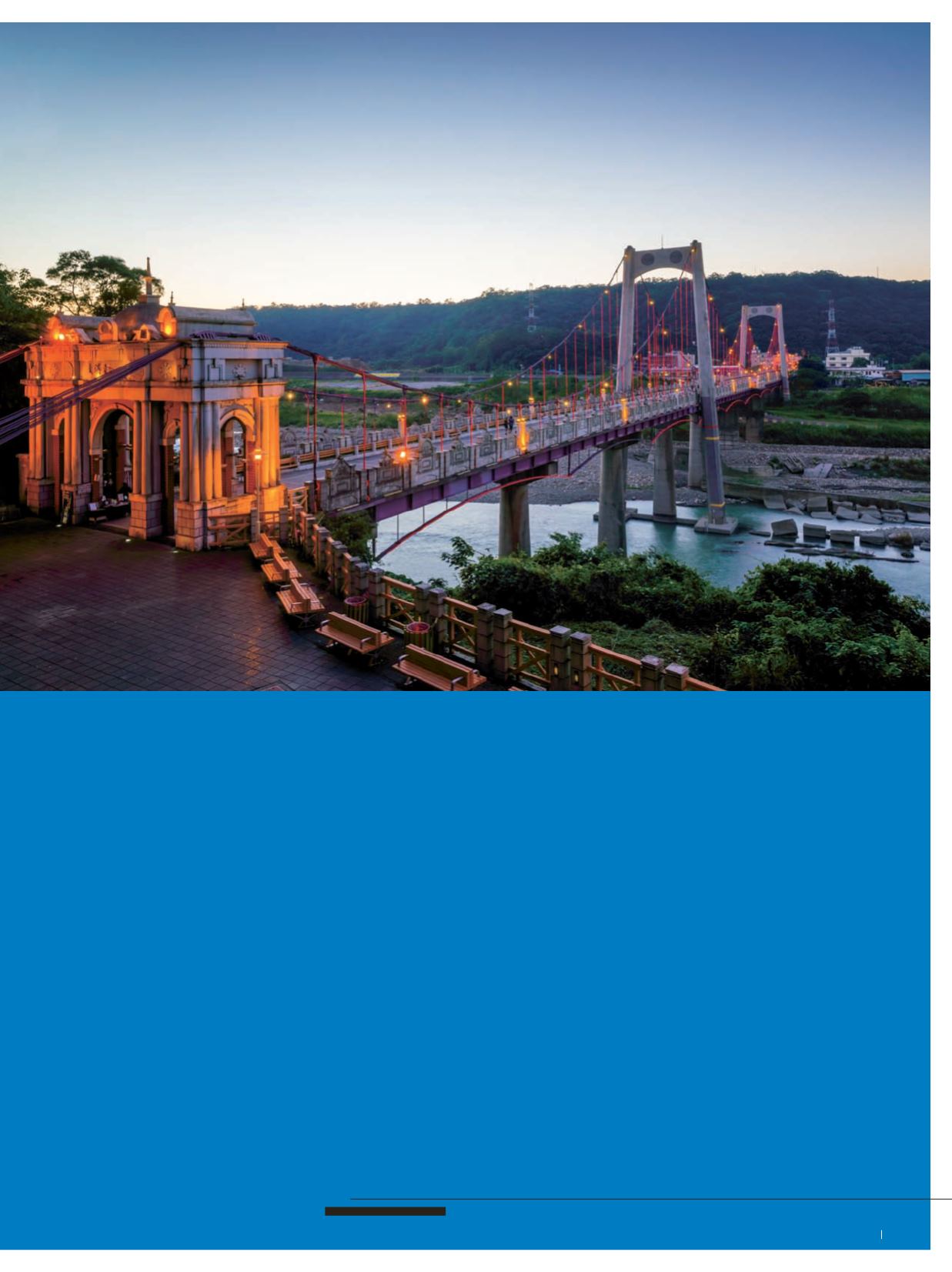
L
ong before “made in Taiwan” there was “grown
in Taiwan.” As recently as the 1930s, the island
was the world’s number-one source of natural
camphor, and the fourth-largest producer of
sugar. In terms of tea harvested, Taiwan ranked
sixth.
Trading in two of these three commodities brought
prosperity to Sanxia and Daxi in the 18th and 19th centuries.
Both towns are conveniently close to Taoyuan International
Airport, within day-tripping distance of Taipei, and much adored
by sightseers who have a taste for antiquity.
Sanxia means “three gorges,” and the place name reflects
the importance that rivers held in the old scheme of things.
Pioneers of Chinese origin began settling here in 1685, drawn by
an abundance of natural resources. In addition to enough water to
grow two crops of rice per year, the nearby mountains were
covered with rich woodlands and streaked with seams of coal. In
an era before roads, let alone motor vehicles or trains, goods of
every kind were carried by porters to the nearest navigable
waterway.
When tracts of forest were cleared for agriculture, the
timber was used for building or sold, unless it was camphor. A
model in Sanxia’s Historical Relics Hall (open 9am–5pm
Tuesday to Sunday; free admission; exhibits labeled in Chinese
only) depicts the low-tech, labor-intensive process by which
camphor trunks were cut up, then heated to produce an oil prized
for its medicinal and insect-repelling properties.
Indigo dyeing was another major industry in the Sanxia of
yore, thanks to an abundance of clean water and
Goldfussia
formosanus
, the wild plant from which the dye was extracted.
Behind the Relics Hall, tourists can try their hand at dyeing
tablecloths or handkerchiefs (call +886 2 2671-2608 to make an
appointment).
By the 1750s, businesses of all kinds were clustering a
stone’s throw from the Sanxia River, a tributary of the Dahan
River. The latter drains more than 1,100km
2
of hill country
southwest of Taipei, and used to be the region’s main water
highway. Since the completion in 1964 of the Shihmen Dam,
however, the water is rarely deep enough for a dinghy, let alone a
barge.
Daxi
43
enVoyage


